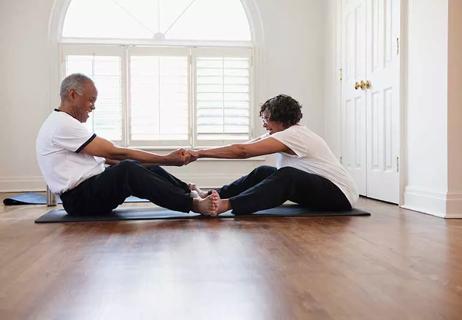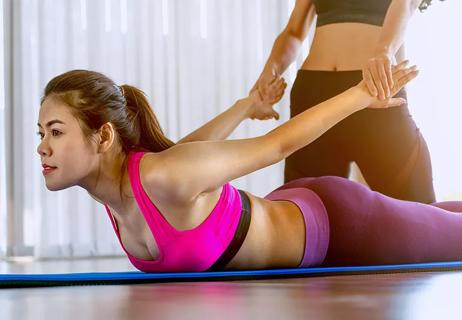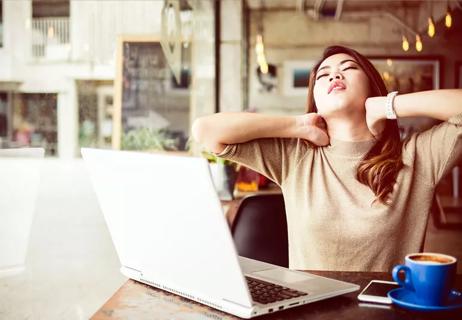Stretch before and after your workouts for maximum benefits, but your pre-workout stretches should be different from your post-workout stretches

Your earbuds are in, your shoes are laced up and you’re ready to exercise — but no need to stretch first, right? After all, many fitness gurus say you should avoid stretching before a workout.
Advertisement
Cleveland Clinic is a non-profit academic medical center. Advertising on our site helps support our mission. We do not endorse non-Cleveland Clinic products or services. Policy
Not so fast, says orthopaedic surgeon Gregory Gilot, MD. That advice about skipping a pre-workout stretch isn’t what you might think and could lead to an injury.
For maximum benefits, it’s important to stretch before and after your workout. Yes, both. Despite online sources that say pre-workout stretching isn’t beneficial, this isn’t as clear-cut as it seems.
“An older study found that static stretching before a workout could reduce your athletic performance,” says Dr. Gilot. “That could be where this myth about stretching before exercise came from. However, the lower performance in this study only lasted a few minutes and didn’t affect people’s long-term strength or endurance.”
What’s more, newer studies have found that pre-workout static stretching may not harm your performance after all. It’s also important to note that the older study only dealt with static stretching — the kind where you extend through your joint and hold the stretch.
This is totally different from dynamic stretching, which uses active movements that warm up and stretch your muscles at the same time. With dynamic stretching, you move a muscle through its full range of motion — without stretching it to the max.
Advertisement
So, it’s OK to stretch before a workout? Yes. And you should — as long as you do it properly, says Dr. Gilot.
“Static stretches aren’t harmful if you stay within your body’s limits,” he clarifies. “Stretching shouldn’t hurt. And loosening up your muscles and joints before exercise is a good thing because it could help you avoid injuries.”
In general, your pre-workout stretches shouldn’t look like your post-workout cool-down.
“During your pre-workout routine, focus on dynamic stretching and only a few shorter static stretches,” advises Dr. Gilot. “This combination approach may be gentler on muscles that need to warm up. You can also try foam rolling, which helps ease tightness, lengthens muscles and can improve range of motion.”
Still, Dr. Gilot says that there isn’t one single stretching routine that will work for everyone. Some people can do more difficult static stretches before their workout. Others need to take it slower.
“Your stretching routine should be based on your fitness level and the activity you’re doing,” he notes.
After your workout, focus on maximizing your flexibility while your muscles and joints are warm. This is your golden opportunity to use static stretching for maximum benefits.
“Doing longer, static stretches after a workout helps lengthen your muscles and loosen joints,” explains Dr. Gilot. “A strong, flexible joint is a healthy joint — and less likely to get injured.”
After your workout, hold static stretches for 30 to 60 seconds each. Relax and breathe deeply through the stretch to send oxygen to your muscles.
You can also try passive stretching, which can help you get a deeper stretch. But just like with your warm-up, don’t stretch until it hurts.
“Even warm muscles can get strained from overstretching,” he warns.
Stretching is an underappreciated part of physical fitness. After all, it’s not where you’ll burn a ton of calories or build up those muscles. And frankly, we’re all short on time. Couldn’t we just skip it?
No, says Dr. Gilot.
“Without stretching, your muscles gradually become tighter and shorter,” he explains. “Shortened, stiff muscles are much more likely to be injured. The small amount of time you save from not stretching could end up sidelining you for several weeks.”
Also, being flexible is a natural joint pain reliever.
“Stretching helps relieve symptoms of osteoarthritis,” he continues. “Exercise combined with stretching is a great way to keep your joints healthy.”
Advertisement
OK, so stretching is great for you. You can even do it when you’re not active, such as when you’re sitting at your desk all day. But there are a few times when you may need to skip stretching, like when you:
So, all that hype about not stretching before workouts is a bit of a misunderstanding.
“Getting some stretches in before and after exercise is beneficial,” reaffirms Dr. Gilot. “But whenever you’re in doubt, talk to your healthcare provider. They can help you create an exercise plan that’s safe and effective for your needs.”
Advertisement
Learn more about our editorial process.
Advertisement

Shoulder rolls, hamstring stretches and calf exercises can all improve flexibility and endurance

This satisfying, involuntary act of yawning and stretching helps release tight muscles

While one focuses on stretching through movement, the other requires holding poses for 30 to 90 seconds — both can have a place in your fitness routine

Counteract psoas muscle stiffness and soreness with stretches that lengthen and strengthen

Having a partner help you stretch can prevent injury and lead to an increased range of motion

Simply contracting certain muscles provides a good stretch to other areas of your body

Relax into this form of stretching while a prop or partner assists you

Reduce pain and stiffness by stretching your body throughout the day

Start having sex about 72 hours before ovulation, then at least every other day during your fertile window

Attachment theory suggests that your earliest relationships shape connections throughout your life

It isn’t a recognized mental health disorder, but research shows that problematic social media use can negatively affect your mental health, self-esteem and sleep